Unlocking Your Portfolio: A Comprehensive Guide to Exchange-Traded Funds
Have you ever wondered how to achieve broad diversification in your investments without the complexities of picking individual stocks or the daily pricing limitations of traditional mutual funds? Enter Exchange-Traded Funds (ETFs), a revolutionary investment vehicle that has reshaped how millions of people manage their wealth. Combining the instant diversification of mutual funds with the trading flexibility of stocks, ETFs have seen remarkable growth, holding over $6.5 trillion in U.S. assets by late 2022. In this guide, we’ll explore what ETFs are, delve into their diverse types and how they differ, unpack their strategic advantages and potential pitfalls, and provide practical steps for integrating them into your financial strategy. Our goal is to empower you with the knowledge to make informed investment decisions, simplifying complex financial concepts into clear, actionable insights.
What Exactly is an ETF and How Does it Work?
At its core, an Exchange-Traded Fund (ETF) is an investment fund that holds a basket of assets, such as stocks, bonds, or commodities. Think of it like a carefully assembled collection: instead of buying one stock, you’re buying a single share that represents a tiny piece of many different stocks, bonds, or other assets. This unique structure allows ETFs to offer instant diversification, spreading your investment across various holdings to help manage risk. ETFs are often celebrated for their typically lower fees compared to many mutual funds, and their ability to be traded on stock exchanges throughout the day, just like individual stocks.
The mechanics behind ETFs are fascinating and crucial to understanding their appeal. Firstly, their composition can be incredibly varied; an ETF might track a broad market index like the S&P 500, focus on a specific industry sector, or even invest in a particular asset class like gold or real estate. Secondly, their trading flexibility is a significant differentiator: unlike mutual funds that are priced only once a day after the market closes, ETF prices fluctuate throughout the trading day based on supply and demand. This means you can buy or sell ETF shares at any point during market hours, giving you greater control over your transactions.
Here are some of the fundamental characteristics that make ETFs a distinct investment option:
- They offer diversified exposure to various assets, sectors, or markets through a single investment.
- Their shares can be bought and sold on stock exchanges throughout the trading day, providing real-time pricing and flexibility.
- ETFs generally boast lower expense ratios, especially passive index-tracking funds, contributing to cost-effective investing.
- Their unique creation and redemption process helps keep the market price aligned with the underlying net asset value (NAV).
- They often provide tax advantages compared to traditional mutual funds, particularly regarding capital gains distributions.
A key mechanism that keeps an ETF’s market price aligned with the value of its underlying assets (its Net Asset Value or NAV) is the creation and redemption process. Specialized entities known as Authorized Participants dynamically create new ETF shares when demand is high and redeem existing shares when demand is low. This constant balancing act helps prevent significant discrepancies between the ETF’s market price and its actual asset value. Another critical aspect for investors is the expense ratio, which is an annual percentage fee deducted from the ETF’s share price. Passive ETFs, which simply track an index, generally boast much lower expense ratios (averaging 0.16% in 2021) than actively managed funds, contributing to their cost-effectiveness. Furthermore, ETFs often offer tax advantages over mutual funds, particularly regarding capital gains distributions, which can be a significant benefit for long-term investors.
Navigating the ETF Landscape: A Deep Dive into Diverse Types
The world of ETFs is vast and constantly expanding, offering specialized funds for nearly every investment goal and risk tolerance. Understanding the different types and how they differ is key to building a well-rounded portfolio. Let’s explore some of the most common and specialized categories:
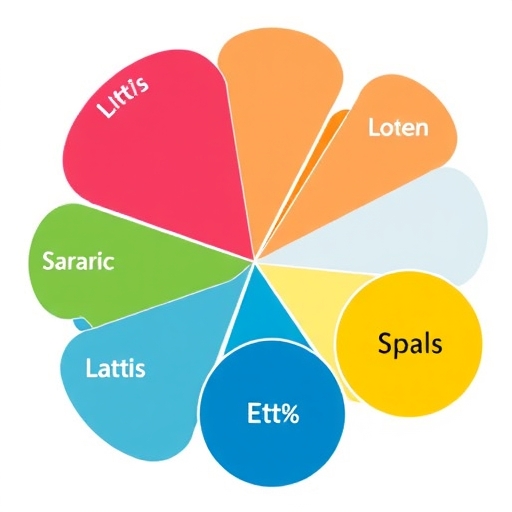
-
Equity ETFs (Stock ETFs): These are perhaps the most common type, investing in a group of stocks. They often track broad market indices like the S&P 500 or the Nasdaq-100, or focus on specific sectors (e.g., technology, healthcare).
- How they differ: Offer broad exposure to the stock market, providing instant diversification across many companies. They typically have low fees due to passive management and are suitable for most investors looking for growth.
- Example: SPDR S&P 500 ETF Trust (SPY) or iShares Core S&P 500 ETF (IVV).
-
Bond and Fixed-Income ETFs: These funds hold various income-producing securities, such as corporate, government, or municipal bonds.
- How they differ: Designed to provide stable income and portfolio diversification, especially for investors nearing retirement or those seeking to reduce overall portfolio volatility. They generally offer lower risk than equity ETFs but also lower growth potential.
- Example: Vanguard Total Bond Market ETF (BND).
-
Real Estate ETFs: These invest in stocks of real estate-focused companies, like Real Estate Investment Trusts (REITs).
- How they differ: Offer indirect exposure to real estate markets without the complexities of direct property ownership. They can provide income and diversification away from traditional stocks and bonds, but are still subject to market and interest rate risks.
-
Commodity ETFs: These funds invest in raw physical goods, such as metals (e.g., gold, silver), oil, or agricultural products (e.g., corn, soybeans), often through options and futures contracts.
- How they differ: Generally riskier and more volatile than equity or bond ETFs due to factors like global demand, geopolitical events, and economic conditions. They can serve as an inflation hedge or diversification tool, but are best understood by investors comfortable with higher risk.
-
Currency ETFs: These track the performance of specific world currencies or baskets of currencies, and can even include cryptocurrencies like Bitcoin or Ethereum.
- How they differ: Characterized by high risk and significant volatility, making them typically suitable only for expert investors with a strong understanding of foreign exchange markets and global economics. Cryptocurrency ETPs, in particular, come with higher risks and often different regulatory oversight (not always registered under the Investment Company Act of 1940).
-
Alternative ETFs: These invest in non-traditional assets like private equity, venture capital, hedge funds, or even collectibles.
- How they differ: Offer diversification beyond conventional stocks and bonds, potentially providing unique return streams. However, they often come with higher risks, less liquidity, and complex underlying strategies.
-
Sustainable ETFs (ESG ETFs): These focus on companies with strong environmental, social, and governance (ESG) practices.
- How they differ: Appeal to investors seeking to align their portfolios with their values while potentially achieving competitive returns. Some research suggests ESG-focused companies may even outperform the broader market in the long term.
-
Specialty ETFs: This broad category includes unique investments, such as leveraged funds (aiming for 2x or 3x the market’s daily results) or volatility-focused funds (e.g., tracking the VIX index).
- How they differ: These are high-risk, complex products best suited for experienced investors with a deep understanding of their mechanics and potential for significant losses, especially over longer periods.
-
Factor ETFs: These choose stocks based on specific financial or market momentum “factors” (e.g., value, growth, low volatility, momentum, size).
- How they differ: Designed for stock market-savvy investors looking to potentially boost returns or achieve specific risk exposures beyond simple market tracking. They introduce an added layer of complexity and risk compared to broad market index funds.
-
Index ETFs: While many ETFs track indices, this term specifically highlights funds designed to passively replicate the performance of a specific underlying index (e.g., S&P 500).
- How they differ: Characterized by broad market exposure and typically very low fees due to their passive management strategy, making them excellent core holdings for many investors.
-
Style ETFs: These funds track specific investment styles, such as small-cap, mid-cap, large-cap, value, or growth stocks.
- How they differ: Aid in portfolio diversification by allowing investors to target companies of a specific size or with particular growth characteristics, helping to balance risk and return profiles.
-
Foreign Market ETFs: These provide exposure to international markets, allowing U.S. investors to invest in companies listed in other countries.
- How they differ: Enable global diversification, reducing reliance on a single economy and potentially capturing growth from emerging markets. They introduce currency risk and geopolitical risk.
-
Inverse ETFs: Designed to profit when underlying assets decline, these funds use strategies like shorting.
- How they differ: A high-risk, advanced strategy typically used for short-term hedging or speculation. They are generally not suitable for long-term holding due to their daily rebalancing and compounding effects.
-
Leveraged Inverse ETFs: These combine inverse and leveraged strategies for magnified returns from market downturns.
- How they differ: Represent the highest risk category among common ETFs, designed for highly experienced traders speculating on very short-term market movements. They carry extreme volatility and are almost never suitable for long-term investors.
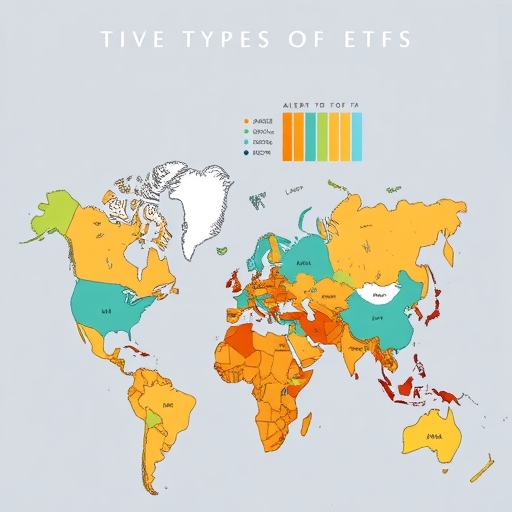
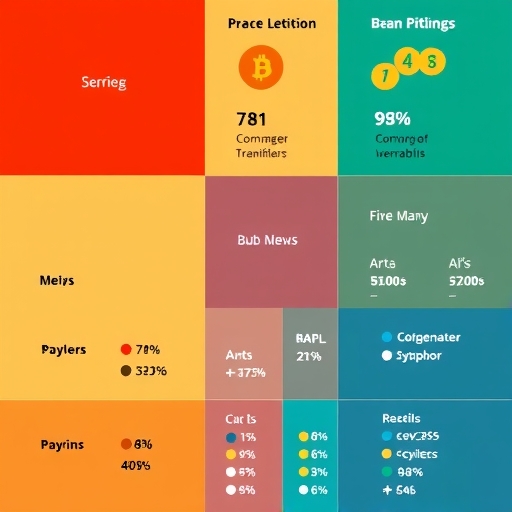
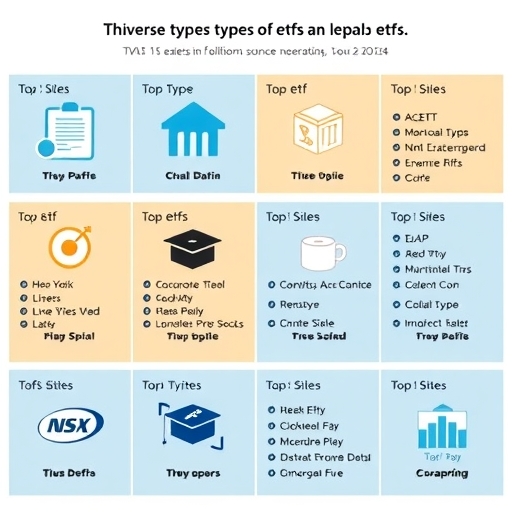
To further illustrate the diverse landscape of ETFs, here is a summary of some popular types and their primary focus:
| ETF Type | Primary Focus | Typical Risk Level | Common Investor Goal |
|---|---|---|---|
| Equity ETFs | Stocks (broad market, sector-specific, etc.) | Medium to High | Growth, broad market exposure |
| Bond ETFs | Fixed-income securities (government, corporate bonds) | Low to Medium | Income, portfolio stability |
| Commodity ETFs | Raw materials (gold, oil, agriculture) | High | Inflation hedge, diversification (high risk) |
| Real Estate ETFs | Real Estate Investment Trusts (REITs) | Medium | Real estate exposure, income |
| ESG ETFs | Companies with strong Environmental, Social, Governance practices | Medium | Values-based investing, sustainable growth |
As you can see, the diversity within the ETF market allows investors to tailor their portfolios to very specific needs, whether seeking broad market exposure, targeted sector plays, or complex alternative strategies. However, with greater specialization often comes increased risk and complexity, so careful research into each type’s unique characteristics is paramount.
The Strategic Advantages and Potential Pitfalls of ETF Investing
ETFs have garnered immense popularity for several compelling reasons, offering distinct advantages over other investment vehicles. However, like any financial instrument, they also come with potential drawbacks and risks that savvy investors must understand.
One of the foremost advantages of ETFs is their inherent diversification. By holding a basket of assets, a single ETF share can provide exposure to numerous companies, bonds, or commodities, buffering your portfolio against the volatility of individual securities. This broad exposure across asset types, sectors, and markets aids significantly in risk management. Another major draw is their typically lower costs. Passive ETFs, in particular, are known for their low expense ratios, which are annual fees that eat into your returns. This cost-effectiveness makes them an attractive option compared to many actively managed mutual funds, where higher management fees can erode long-term gains. Furthermore, ETFs offer significant trading flexibility, allowing you to buy and sell shares throughout the trading day at market prices, unlike mutual funds that only trade once daily after market close. This real-time pricing can be advantageous for investors who wish to react quickly to market movements. Lastly, ETFs often boast superior tax efficiency, especially concerning capital gains distributions, which can lead to a smaller tax burden for investors compared to some mutual funds.
To recap, here are the primary benefits of investing in ETFs:
- **Instant Diversification:** A single ETF can hold hundreds or thousands of underlying assets, spreading risk across various holdings.
- **Lower Costs:** Many ETFs, especially passively managed ones, have significantly lower expense ratios than actively managed mutual funds.
- **Trading Flexibility:** ETFs can be bought and sold throughout the trading day at current market prices, similar to individual stocks.
- **Tax Efficiency:** Their unique structure can lead to fewer taxable capital gains distributions compared to mutual funds, beneficial for long-term investors.
- **Transparency:** ETF holdings are typically disclosed daily, providing investors with a clear view of their investments.
However, it’s crucial to be aware of the potential pitfalls. While most ETFs are highly liquid, some niche or less popular ETFs may suffer from low liquidity, making them difficult to buy or sell quickly without impacting their price. This can be a concern for investors needing to exit a position rapidly. Debates also exist regarding the market impact of ETFs; some critics suggest they may inflate stock prices or increase overall market volatility. Historically, ETFs have been linked to instances of market flash crashes, such as those observed in May 2010, August 2015, and February 2018. While passive ETFs are generally inexpensive, actively managed ETFs and certain specialty, commodity, or currency ETFs may carry higher fees, sometimes rivaling those of mutual funds. Investors must scrutinize the expense ratio for any fund they consider. A less common but important risk is fund closure: ETFs with insufficient assets may be closed down, potentially forcing investors to sell their holdings at an inopportune time, possibly at a loss. Finally, while similar to ETFs, Exchange-Traded Notes (ETNs) are unsecured debt securities, meaning they carry issuer credit risk – a factor not present in traditional ETFs.
Investors should be mindful of these potential risks when considering ETFs:
- **Liquidity Risk:** Niche or low-volume ETFs may be difficult to trade without affecting their market price.
- **Tracking Error:** While designed to track an index, an ETF’s performance might slightly diverge from its benchmark due to fees, expenses, or replication strategies.
- **High Fees for Specialty ETFs:** Not all ETFs are low-cost; actively managed, leveraged, inverse, or commodity ETFs can have higher expense ratios.
- **Market Volatility:** Although diversified, ETFs are still subject to market fluctuations and overall economic conditions.
- **Fund Closure:** Less popular ETFs may be delisted or closed, potentially forcing investors to sell at an unfavorable time.
- **Complexity of Specialty Funds:** Leveraged, inverse, and currency ETFs involve complex strategies and are generally unsuitable for most long-term retail investors.
ETFs in the Broader Market: Comparisons and Regulatory Context
To fully appreciate the role of ETFs, it helps to understand how they stack up against other popular investment vehicles and the regulatory framework that governs them.
When comparing ETFs versus Mutual Funds, several key differences emerge. While both offer diversification by pooling investor money to buy a basket of securities, their trading mechanisms diverge significantly. ETFs trade on exchanges throughout the day, giving investors the flexibility to buy or sell at real-time market prices. Mutual funds, on the other hand, are priced only once daily, at the close of the market, and are bought or sold directly from the fund company. Furthermore, ETFs typically have lower expense ratios and often provide greater tax efficiency due to their unique creation/redemption process, which helps minimize taxable capital gains distributions. Mutual funds can sometimes incur higher fees and may distribute capital gains more frequently, leading to a larger tax bill.
This table summarizes the core differences between ETFs and traditional mutual funds:
| Feature | Exchange-Traded Funds (ETFs) | Traditional Mutual Funds |
|---|---|---|
| Trading | Traded on exchanges throughout the day, like stocks. Prices fluctuate based on supply/demand. | Bought/sold directly from the fund company once a day, after market close, at Net Asset Value (NAV). |
| Pricing | Real-time market price. | End-of-day NAV. |
| Fees (Expense Ratio) | Generally lower, especially for passive index ETFs. | Can be higher, especially for actively managed funds. |
| Tax Efficiency | Often more tax-efficient due to creation/redemption mechanism minimizing capital gains distributions. | May distribute capital gains more frequently, potentially leading to higher taxes. |
| Diversification | Offers broad diversification across various assets, sectors, or markets. | Offers broad diversification across various assets, sectors, or markets. |
The distinction between ETFs versus Individual Stocks is also clear. Investing in a single stock exposes you to the specific risks and volatility of that one company. If that company performs poorly, your investment could suffer significantly. ETFs, by holding many stocks, offer a built-in buffer against such individual company risks, providing greater diversification and generally smoother returns. While the potential for explosive gains from a single “home run” stock might be higher, the risk of substantial losses is also greater. ETFs, therefore, are often a more prudent choice for investors prioritizing stability and broad market exposure.
Finally, let’s consider ETFs versus Index Funds. This comparison can sometimes be confusing because many ETFs are, in fact, index funds (e.g., an S&P 500 ETF). The primary difference lies in their structure and how they are traded. An Index ETF tracks a specific index and trades on an exchange like a stock. An Index Mutual Fund also tracks an index but is bought and sold once daily directly from the fund company. So, while both aim to replicate market performance and often have low fees, the ETF offers intraday trading flexibility that the mutual fund does not.
From a regulatory standpoint, ETFs in the U.S. are primarily governed by the Investment Company Act of 1940, which mandates their registration with the Securities and Exchange Commission (SEC) and adherence to U.S. securities laws. This robust oversight provides a layer of investor protection and ensures transparency. Regulatory bodies like FINRA (Financial Industry Regulatory Authority) also play a role, for example, by standardizing the classification of market capitalization (e.g., mega-cap, large-cap, mid-cap, small-cap), which helps investors understand the size and risk profiles of companies and ETFs. It’s worth noting that emerging asset-backed ETPs, such as those tracking cryptocurrencies, may not always be registered under the Investment Company Act of 1940, implying higher risks and different regulatory oversight. For international investors, policies like India’s Liberalised Remittance Scheme (LRS) are relevant, as they enable individuals to buy U.S. ETFs, facilitating global diversification.
Getting Started: Practical Steps to Invest in ETFs
Investing in ETFs doesn’t have to be complicated. With a clear understanding of your financial goals and a few practical steps, you can begin to build a diversified portfolio. Here’s how you can get started:
- Open a Brokerage Account: The first step is to open an investment account with a reputable brokerage firm. Many online brokers offer commission-free ETF trading, making it very accessible for individual investors. If you already have a brokerage account for stocks, you can typically use the same account to buy and sell ETFs.
- Define Your Financial Goals and Risk Tolerance: Before you invest, ask yourself: What am I saving for? (e.g., retirement, down payment, education). What is my investment horizon? How much risk am I comfortable taking? Your answers will guide your ETF selection. For instance, a young investor saving for retirement might tolerate more risk with equity ETFs, while someone nearing retirement might prefer bond ETFs for stability.
- Research ETFs: This is where your knowledge of the different ETF types comes into play. Based on your goals and risk tolerance, research ETFs that align with your strategy. For beginners, broad market ETFs tracking indices like the S&P 500 or a total stock market fund are often recommended due to their simplicity, low fees, and inherent diversification. You can find information on an ETF’s holdings, expense ratio, and historical performance on your brokerage platform or financial news websites.
- Consider Trading Strategies: One popular strategy, especially for long-term investors, is dollar-cost averaging. This involves investing a fixed amount of money at regular intervals (e.g., $100 every month), regardless of the ETF’s price. This disciplined approach helps smooth out your average purchase price over time and reduces the impact of market volatility.
Here are some additional tips for new ETF investors:
| Tip Category | Recommendation | Why it Matters |
|---|---|---|
| Start Simple | Begin with broad market index ETFs (e.g., S&P 500, Total Stock Market). | Provides instant diversification, low fees, and aligns with long-term growth for most investors. |
| Understand Fees | Always check the expense ratio of any ETF you consider. | Fees directly impact your net returns over time; lower is generally better for passive funds. |
| Avoid Complex Products | Steer clear of leveraged, inverse, or highly specialized ETFs unless you are an experienced trader. | These funds carry significantly higher risks and are designed for short-term speculation, not long-term investing. |
| Regular Contributions | Implement a dollar-cost averaging strategy by investing consistently. | Reduces the impact of market timing, helps build wealth steadily, and smooths out purchase prices. |
| Review Periodically | Rebalance your portfolio and review your ETF holdings annually. | Ensures your investments remain aligned with your evolving financial goals and risk tolerance. |
For those just starting their investment journey, broad market ETFs (like those tracking the S&P 500) and even target date funds (which are often comprised of a mix of ETFs and other funds that automatically adjust their asset allocation over time) are excellent choices. They provide extensive diversification with minimal effort. Experienced investors who have their long-term goals covered might explore more specialized options like specialty or factor ETFs to potentially boost returns or gain exposure to specific market segments, though these come with added risk. Regardless of your experience level, we always recommend consulting a qualified financial professional. They can help you align your ETF choices with your personal financial goals, risk tolerance, and overall financial situation, ensuring your investment strategy is tailored specifically for you.
Conclusion
In summary, Exchange-Traded Funds (ETFs) stand as a versatile and often advantageous investment vehicle, suitable for a wide spectrum of investors. From beginners seeking broad market exposure to experienced traders targeting specialized sectors, ETFs offer a compelling blend of diversification, trading flexibility, and cost-efficiency. We’ve seen how their unique structure, which combines features of mutual funds and stocks, allows for instant portfolio diversification and intraday trading. We’ve also navigated the extensive landscape of ETF types, from traditional equity and bond funds to more niche commodity, currency, and sustainable options, understanding how each type serves different investment objectives and carries unique risk profiles.
While the strategic advantages of ETFs, such as their lower fees, tax efficiency, and transparency, are significant, it’s equally important to acknowledge their potential pitfalls, including liquidity concerns for niche funds, the nuanced impact on market volatility, and the higher risks associated with specialized products like leveraged or inverse ETFs. By carefully considering these aspects and researching funds that align with your personal financial goals and risk tolerance, you can leverage ETFs effectively.
The continuous evolution and growing popularity of ETFs underscore their importance in a well-diversified portfolio. However, like all investments, understanding their specific features, benefits, and risks is paramount to making informed decisions. For personalized guidance and to ensure your ETF choices align perfectly with your unique financial journey, consulting a qualified financial professional remains the most prudent step.
Here are some key takeaways to remember about Exchange-Traded Funds:
- ETFs offer a powerful combination of diversification, liquidity, and cost-effectiveness for various investment goals.
- There is a vast array of ETF types available, catering to different asset classes, sectors, and investment strategies, from broad market to highly specialized.
- While generally advantageous, it’s crucial to be aware of potential risks like liquidity issues in niche funds, tracking errors, and the elevated risks of complex leveraged or inverse ETFs.
- Comparing ETFs with other investment vehicles like mutual funds and individual stocks highlights their unique benefits in terms of trading flexibility and tax efficiency.
- Starting with broad market ETFs and utilizing strategies like dollar-cost averaging can simplify entry for new investors, but professional advice is always recommended for personalized planning.
Disclaimer: This article is for informational and educational purposes only and does not constitute financial advice. Investing involves risks, including the potential loss of principal. Always consult with a qualified financial professional before making any investment decisions.
Frequently Asked Questions (FAQ)
Q: What is the main difference between an ETF and a mutual fund?
A: The primary difference lies in how they are traded. ETFs trade on stock exchanges throughout the day at market prices, offering intraday liquidity. Mutual funds are typically bought and sold once a day, after the market closes, at their net asset value (NAV) directly from the fund company.
Q: Are ETFs suitable for beginners?
A: Yes, many ETFs are excellent for beginners, particularly broad market index ETFs (e.g., those tracking the S&P 500 or a total stock market). They offer instant diversification, generally low fees, and are easy to understand. However, specialized or complex ETFs like leveraged or inverse funds are generally not suitable for novice investors.
Q: What are the tax advantages of ETFs?
A: ETFs often have tax advantages over mutual funds due to their unique “creation and redemption” mechanism. This process allows them to manage capital gains more efficiently, often resulting in fewer taxable capital gains distributions to shareholders, which can lead to a lower tax burden for long-term investors.


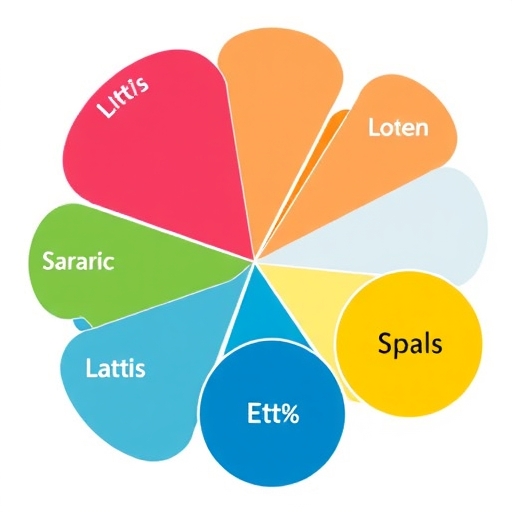
No responses yet